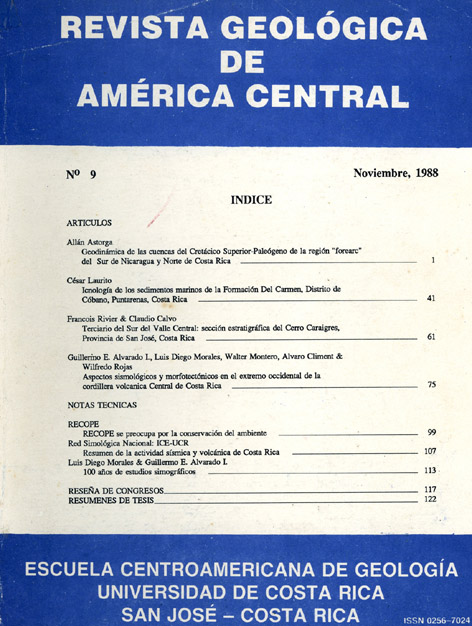Abstract
The outcrops of Caraigres Mountain, allow to buid one continuous measured section of Pacacua Formation and of the shallow water limestones of Parrita Unit, from the Late Eocene, equivalent of the El Cajon Unit the Brito Formation. The Pacacua Formation, Oligocene and Miocene in age, consists of a volcanic-sedimentary series, represented by volcanic onglomerates, volcanic sandstones (wackes), volcanic tuffs and black silts.
The shallow limestones of the Parrita Unit, with macroforamifera and transported bioclasts, with a thickness of 150 m, are typical of a facies of opened lagoons.
The big thickness, more than 400 m, of the Pacacua Formation from a shallow environment indicates a continuous subsidence of the Central Valley during the Oligocene and the Miocene, with the formation of horst y graben, limitated to the Nort and to the South by main faults, along which occurred volcanic eruptions, which materials were transported by rivers to the subsident basin, where the were sedimented as deltas.
The Pacacua Formation is the main sedimentary series of the Valley Central. The Coris, San Migel y Turrucares Formations ought to be considered as members of this Formation.






